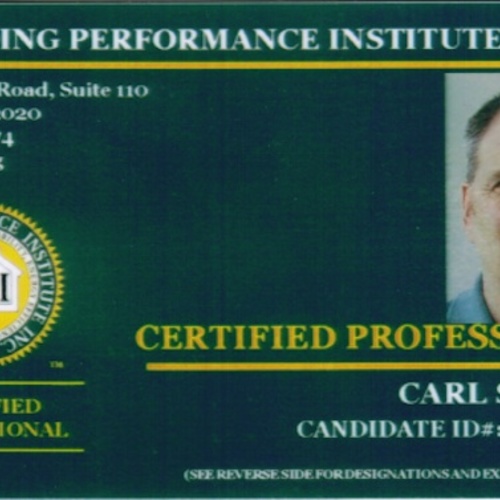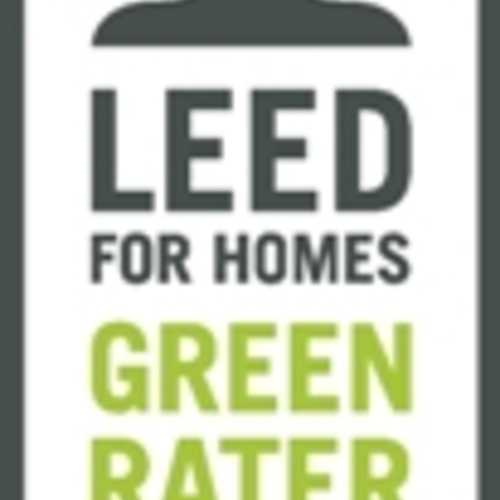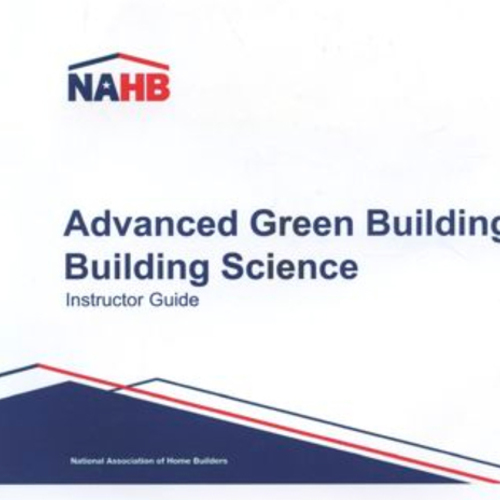
Many industries have designations and certifications available for practitioners, some of which have strong legal implications, such as MD and RN. Many others have been created by professions themselves, and, while requiring varying levels of rigor to attain, these are primarily marketing tools, proper usage of which is enforced by the industry or association.
In the green building arena, we have seen a range of these titles emerge recently. One of the oldest and most prominent is LEED Accredited Professional (AP) . More recent entrants include the NAHB’s Certified Green Professional (CGP) and NARI’s Green Certified Professional (GCP). Other professional designations include Building Analyst Professional from the Building Performance Institute (BPI), Home Energy Rater (HERS) from Resnet, and Green Advantage Certification.
Three green labels
I recently obtained my LEED AP Homes designation under the beta test of its new accreditation system. Starting later this year, people seeking LEED AP designation must take an expanded test that includes questions on their specific areas of expertise, rather than the general test that was available previously. Having taken and passed that test, I can honestly say that it was a disappointment. While it did address green building knowledge, fully half of the test was on commercial concepts, and many of the questions were literally a trivia contest requiring students to memorize arcane details such as how many points are available for a specific LEED credit. Qualified professionals should not have to submit to this kind of abuse—having to study minutiae that’s readily available with just a few minutes’ research to anyone with an elementary education.
NAHB’s CGP designation (interestingly, even though “Certification” is in the name, it is referred to as a designation—curious wordplay, inspired by lawyers, no doubt) and can be obtained by taking a three-day class and passing a short test. I was involved in the creation of this training and have taught it many times. It is currently undergoing a much-needed update, which will bring it in line with the new National Green Building Standard, and, I hope, improve some of the less-effective parts of the training.
During the development process, I argued strongly for a requiring builders to have completed buildings that were certified under a recognized green building program before they could achieve this designation, but that was left out of the final requirements. The biggest problem with this program is the inconsistent quality of instruction. I have heard from many attendees that their particular teacher did not have the depth of knowledge of green building to effectively present the material, diminishing the value of the class. I was recently informed that during the revision of this program, more stringent requirements for instructors will be implemented.
NARI’s GCP designation requires professionals to self-certify that they have at least five years’ experience in remodeling, are currently employed by or own a remodeling firm, and have received a minimum of 16 hours green training in the last five years; they then must pass a test consisting of approximately 200 multiple-choice questions. There is an optional 24-hour study session that most candidates take advantage of. This program is offered nationally either through webinars or in-person through local NARI chapters.
Three more, just for good measure
HERS rater training involves five or more days of classroom and field training, followed by written and field tests. To become a certified HERS rater, one must obtain liability insurance and work under a “provider” organization that supervises the work and provides quality assurance on all their certified ratings. While this program is limited mostly to energy efficiency, it is among the most rigorous certifications available.
BPI’s Building Analyst certification requires both a written and a field test, although the training is optional. Green Advantage is similar to BPI, requiring a test, with training being optional.
Where do we go from here?
So where does that leave our industry, or consumers, for that matter? Well, in reality, sort of nowhere. There are literally tens of thousands of people with LEED AP designations. NAHB’s CGP is coming on strong, with about 3,000 certified to date. There are a lot of HERS raters out there, and BPI and Green Advantage are plugging along, taking advantage (pardon the pun) of expanded interest in green building. LEED has definitely won the media race, although until very recently, its designations were exclusively commercial. While the actual value in this designation is questionable, the public awareness and added marketing value are tangible benefits of the program. It remains to be seen how much market presence the rest of the designations will command.
I think we can all acknowledge that the primary value of a designation to industry professionals is marketing. A string of letters after your name can provide credibility and differentiation from the competition. I am very concerned that the wide range of requirements will add to marketplace confusion, not unlike what is currently happening with green-home certifications. Maybe one day we will see training and designations for professionals that are both comprehensive and have a strong market presence. Right now, however, we have one or the other, but not both.
Weekly Newsletter
Get building science and energy efficiency advice, plus special offers, in your inbox.















4 Comments
From the un-curmudgeon
Great blog, Carl. I've been enjoying it very much.
Designation Exhaustion
Good topic to explore.
You missed GreenGlobes from GBI, which I wish someone would examine in the context of LEED domination.
Sav
Green Globes
Green Globes/GBI does not have an individual designation, although they do certify commercial buildings. As I deal with residential, and this post only addressed individuals, they didn't fit in the mix.
Storm before the calm?
The green building world is definitely going through a chaotic period, with all the various programs out there trying to doing their own things. In the middle of the week when we're teaching the HERS rater class at Southface, about 5 or 6 different Southface employees and tell the fledgling raters about the plethora of programs, certifications, designations, accreditations... The students hear about ENERGY STAR, LEED for Homes, NAHB Green, EarthCraft House, Building America Builders Challenge, Home Performance with ENERGY STAR, Designed to Earn the ENERGY STAR, EarthCraft Concepts, North Carolina Healthy Built, Green Rater, LEED for Homes Provider Representative, BPI Building Analyst, EarthCraft House Technical Adviser, Home Energy Survey Professional (HESP), Comprehensive Home Energy Auditor (CHEA), and, of course, how to get certified as a home energy rater by connecting with a home energy rating provider after finishing the training.
The hardest part for those out there trying to get involved in the field is getting (and paying for) all the training they need to be able to work in the different programs. There's an attempt to get Green Rater established as the single designation someone needs to certify/qualify/verify houses for many of the programs, and I hope it takes hold because it's a mess right now.
Log in or create an account to post a comment.
Sign up Log in